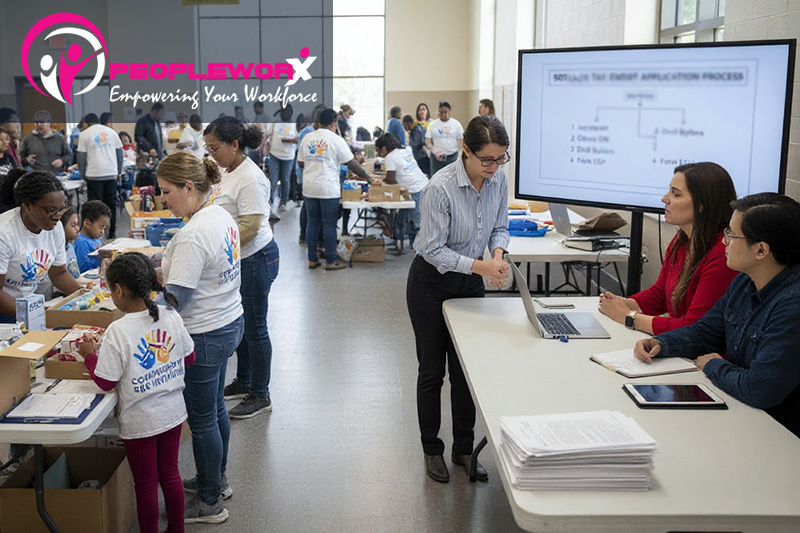Reshoring headlines are everywhere. Factory construction is up, incentives abound, and policy is noisy. But here’s the hard truth: announcements don’t equal output. The biggest bottleneck isn’t capital, it’s people. Manufacturers that win reshoring in 2025–26 are the ones building workforce infrastructure: hiring pipelines, compliant payroll, time & labor accuracy, skills development, and day-one retention.
Recent reporting underscores the constraint: even amid expanding factory footprints, many plants struggle to reach full capacity due to skilled-labor gaps and execution challenges, not simply tariffs or tax credits.

The Gap: Reshoring Sentiment vs. Shop-Floor Reality
- Plenty of plans, slower go-lives. Consolidated data shows U.S. reshoring and FDI job announcements remain strong, yet conversion to sustained output depends on stable policy and talent availability.
- Labor remains the choke point. National coverage highlights chronic shortages of qualified manufacturing workers, especially for automation-heavy roles, which dampen the impact of tariff-driven policy alone.
- “Friend-shoring” is rising. Some firms hedge by diversifying to Mexico/Vietnam/India when domestic skills, cost, or policy certainty lag, again pointing back to workforce economics.

What Actually Moves the Needle: Workforce Infrastructure
Winning reshoring manufacturers are investing in five “people systems” that scale output:
- Day-One Retention (the first 90 days).
Put simply, output dies when new hires churn. Strong onboarding + clear expectations + early skills ramp reduce early attrition and keep lines running. - Compliant, multi-state payroll and job-costing.
Shifts, overtime, prevailing wage, and labor allocations must be right, every run. Clean payroll + accurate time data = lower risk, better unit economics, and trust on the floor. PeopleWorX clients cite the value of a named account rep and pre-configured multi-state compliance to keep pay precise while plants scale. - Time & Labor by Work Center/Client/Project.
Tie hours to lines, jobs, and cost centers in real time, feeding the GL and giving leaders line-of-sight into true margin per product. Nonprofits and complex operations rely on this for audit-ready reporting; manufacturers can too. - Skills + Certifications (LMS) integrated with HR.
Safety, quality, and throughput all rise when upskilling is built into the same system that runs payroll/time. Track certs, assign micro-learning, and schedule refreshers before audits hit. - Dedicated, human support, no ticket labyrinth. When you’re ramping a line, you need an expert who knows your business, by name, to solve issues fast and keep payroll/HR humming. That “technology + human touch” is the PeopleWorX difference.
From “Announced” to “Operational”: A Practical 90-Day Playbook
- Week 0–2: Hiring Blueprint. Define recruiting channels, pre-hire assessments, and realistic shift premiums.
- Week 2–4: Payroll + Time Setup. Configure pay rules (overtime, shift diff, prevailing wage), accruals, and job costing; test GL feeds.
- Week 3–6: Onboarding + Safety Ramp. Digitize new-hire paperwork, I-9/WOTC, and launch role-based learning paths.
- Week 6–8: Supervisors’ Toolkit. Train leads on coaching, feedback loops, and schedule reliability to protect the first 90 days.
- Week 8–12: Audit-Ready Reporting. Validate allocations, variance dashboards, and certification statuses before your first audit window.
PeopleWorX pairs modern tools with a named specialist who anticipates issues, shortens your learning curve, and keeps you compliant—so you can focus on throughput.
Don’t stop learning here!
Be part of our interactive sessions designed to help leaders build stronger teams.
Register for the next Peopleworx Webinar →Frequently Asked Questions
Q1. Do tariffs alone bring manufacturing jobs back?
A. No. Tariffs may influence site selection, but capacity depends on people: hiring, retention, compliant payroll/time systems, and upskilling. Firms that invest in workforce infrastructure reach output faster.
Q2. What HR/Payroll capabilities matter most during a reshoring ramp?
A. Accurate multi-state payroll, overtime/shift rules, prevailing wage support, job costing to lines/work centers, mobile time capture, GL feeds, and LMS for safety/certifications, all supported by a named specialist.
Q3. How do I reduce 90-day turnover on a new line?
A. Tighten onboarding (digital, fast), set clear expectations, provide early skills training, and support supervisors with coaching tools. First-90-day retention is the fastest path to stable throughput.
Q4. We’re not “big”, does a dedicated rep really matter?
A. Yes. SMB manufacturers see outsized gains from a partner who knows their wage rules, audits, and scheduling realities, resolving issues before they hit payroll and production.
Q5. What’s a realistic 90-day implementation sequence?
A. Hire plan → payroll/time rules → onboarding/WOTC/I-9 → skills ramp (LMS) → supervisor enablement → audit-ready reporting with allocations and cert tracking (see 90-day playbook above).
Where PeopleWorX Fits
- Single-database platform for Payroll, Time & Attendance, HR, Benefits, and LMS, built for growing manufacturers.
- Hands-on implementation + a dedicated account rep (not a call center).
- Compliance confidence across states, wage types, garnishments, taxes, ACA, and audits.
Ready to convert reshoring plans into production? Talk to a People Strategist about a workforce infrastructure rollout that fits your plant, shifts, and goals.






